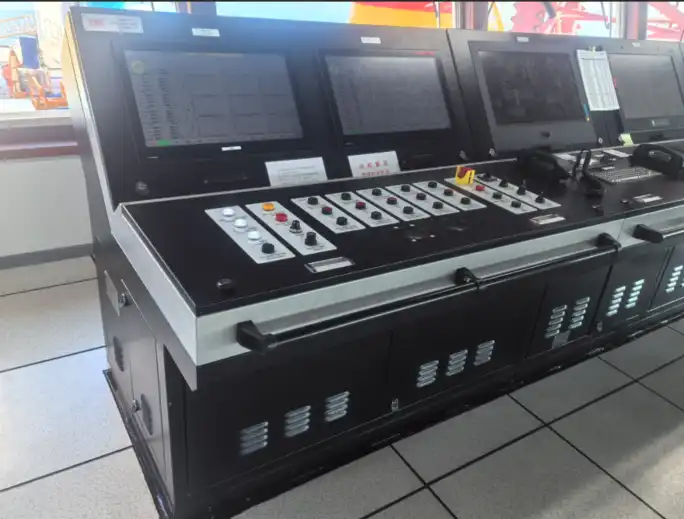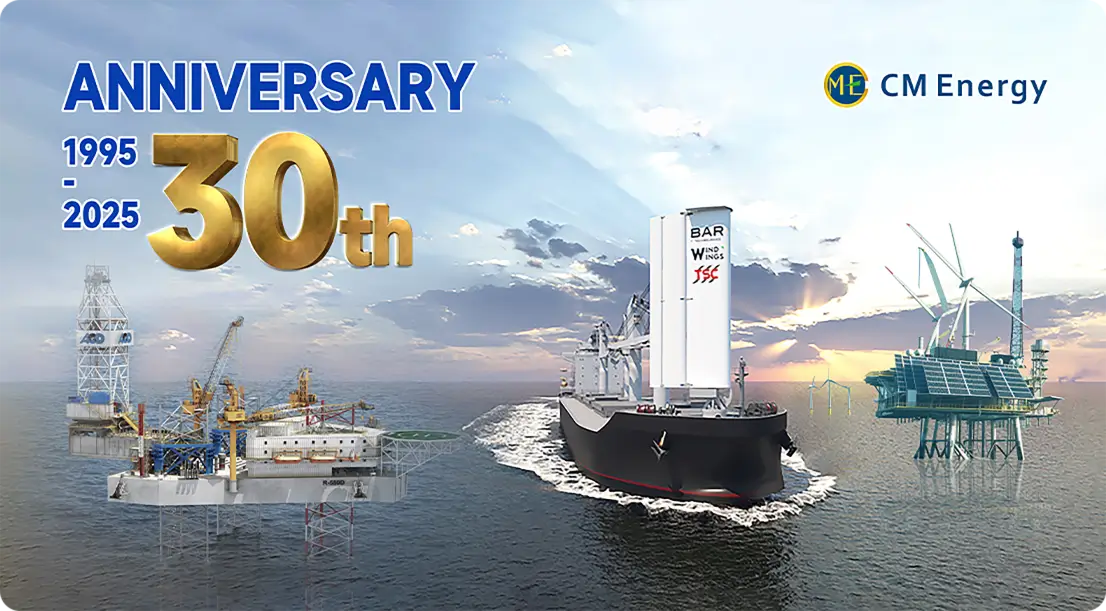Understanding Jacking System Vulnerabilities
Jacking systems are complex mechanisms that face numerous challenges in harsh marine conditions. To effectively prevent failures, it's essential to identify and address potential vulnerabilities:
Environmental Factors
Self-elevating platforms operate in dynamic environments where wind, waves, and currents can exert significant forces on the structure. These external loads can lead to uneven stress distribution across the legs, potentially causing misalignment or damage to the jacking system components. Advanced Jacking Control Systems account for these environmental factors by continuously monitoring and adjusting the jacking process to maintain stability.
Mechanical Stress and Wear
The repetitive nature of jacking operations subjects mechanical components to considerable stress and wear over time. Gear teeth, pinions, and other critical parts may deteriorate, leading to reduced performance or sudden failures. TSC's jacking control solutions incorporate sophisticated load monitoring and distribution algorithms to minimize uneven wear and extend equipment lifespan.
Human Error
Despite advanced automation, human input remains crucial in jacking operations. Mistakes in judgment or improper manual overrides can lead to dangerous situations. To mitigate this risk, modern control systems feature intuitive interfaces, clear warning systems, and permission-based bypass controls, ensuring that critical operations are only performed by authorized personnel.
Redundancy in Safety Interlock Design
Redundancy is a cornerstone of reliable safety interlock systems, providing multiple layers of protection against potential failures:
Dual-Channel Architecture
Advanced jacking control systems often utilize a dual-channel architecture to ensure maximum safety during operation. This design involves two independent circuits that monitor and control crucial safety functions. The dual-channel system is particularly valuable because, if one channel fails, the second can take over, allowing for continued safe operation or triggering a controlled shutdown to avoid any potential hazards. This redundancy ensures that the system remains operational under almost any condition, enhancing reliability in high-risk industrial environments.
Diverse Sensor Networks
Modern jacking control systems use a wide variety of sensors to monitor key parameters like leg height, load distribution, and platform stability. These sensors work in tandem, allowing for cross-verification of critical measurements. For instance, leg height can be monitored through both mechanical and electronic sensors. If discrepancies are detected, the system will trigger an alert or safety stop, preventing potential failures caused by malfunctioning sensors. This multi-layered approach enhances system accuracy and safety.
Fail-Safe Mechanisms
Fail-safe mechanisms are integrated into the design of jacking control systems to ensure that the platform returns to a safe state if the system experiences failures or power loss. For example, if there is an issue with the power supply, mechanical brakes or locking systems will automatically engage, preventing the uncontrolled movement of platform legs. These fail-safe measures provide an extra layer of security, ensuring the platform remains stable even in the event of a system malfunction.
Maintenance Schedules for Reliable Interlock Performance
Regular maintenance is crucial for ensuring the long-term reliability of safety interlock systems:
Proactive Inspection Routines
Implementing rigorous inspection schedules helps identify potential issues before they escalate. This includes visual checks of mechanical components, electrical connections, and hydraulic systems. TSC recommends tailored inspection protocols based on the specific configuration of each platform's jacking system.
Sensor Calibration and Testing
Periodic calibration of sensors and testing of interlock functions are essential for maintaining system accuracy. This process involves simulating various fault conditions to verify that the safety interlocks respond correctly. CM Energy's technical support team provides comprehensive guidance on calibration procedures for their jacking control systems.
Software Updates and Upgrades
As technology evolves, so do the capabilities of jacking control systems. Regular software updates can introduce new safety features, improve system performance, and address any identified vulnerabilities. TSC offers ongoing support and upgrade paths for their Jacking Control System products, ensuring that safety interlocks remain at the cutting edge of technology.
Conclusion
Advanced safety interlocks are indispensable in preventing jacking failures on self-elevating platforms. By addressing system vulnerabilities, implementing redundant safety measures, and maintaining rigorous maintenance schedules, operators can significantly reduce the risk of accidents and ensure the longevity of their equipment. TSC's comprehensive approach to jacking control system design and support exemplifies the industry's commitment to safety and reliability in challenging marine environments.
FAQ
1. How often should safety interlocks be tested on a jacking system?
Safety interlocks should be tested at regular intervals, typically as part of the platform's planned maintenance schedule. The frequency can vary depending on usage patterns and environmental conditions, but generally, a thorough test should be conducted at least annually, with more frequent checks of critical components.
2. Can safety interlocks be bypassed in emergency situations?
While safety interlocks are designed to prevent dangerous operations, some systems do allow for controlled bypassing in emergency situations. However, this should only be done by authorized personnel following strict protocols. TSC's jacking control systems incorporate permission-based bypass functions with extensive logging to ensure accountability.
3. How do modern jacking control systems handle power failures?
Advanced jacking control systems are designed with fail-safe mechanisms to handle power failures. This typically involves automatically engaging mechanical brakes or hydraulic locks to prevent uncontrolled movement. Additionally, many systems incorporate uninterruptible power supplies (UPS) to maintain critical monitoring and control functions during short-term power outages.
Call to Action
Ensure the safety and reliability of your self-elevating platform with TSC's state-of-the-art Offshore Platform Jacking Control System. Our solutions offer unmatched protection against jacking failures, backed by over 20 years of marine engineering expertise. With customizable designs, comprehensive functionality, and certifications from leading classification societies, TSC is your trusted partner in jacking system safety. Don't compromise on the security of your operations – contact us today to learn how our advanced safety interlocks can safeguard your assets and personnel. Reach out to our expert team at info.cn@cm-energy.com for a personalized consultation and take the first step towards enhanced operational safety.


